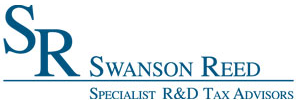Alabama Patent of the Month – November 2023
Aerial saws have commonly been used for large-scale tree trimming. They often hang below a helicopter operated by a skilled pilot to clear and maintain highlines and pipeline rights-of-way. Signature Utility Services, LLC has found that most of these saws have extreme torque loads, making it difficult to fly a helicopter with any accuracy. Since Signature Utility Services is focused on uncompromised safety, they set out to design an improved aerial saw that lets any pilot fly with precision.
Their recently patented design is a sophisticated piece of machinery that comprises an elongated arm, a saw blade, and an engine enclosure. Unlike traditional systems that attach at one end, Signature Utility Services’ aerial saw assembly connects at a point between the ends, reducing torque on the supporting stem.
This design addresses the drawbacks of previous aerial saws, where high torque loads at the attachment point could hinder the accuracy and safety of tree-cutting operations. The innovation introduced by Signature Utility Services enhances structural integrity and minimizes stress on the stem, resulting in improved maneuverability for the helicopter carrying the saw assembly.
The saw attachment allows for efficient interchangeability between different types of saws, streamlining the process of switching between vertical and horizontal orientations. This interchangeability enhances the versatility of the aerial saw, making it a valuable tool for various applications.
To stabilize the saw assembly at the desired angle, a brace is attached to the engine enclosure and the support stem. An adjustable coupling further enables users to fine-tune the angle between the saw and the support stem, providing flexibility in different operational scenarios.
By addressing the limitations of prior art systems, this innovation contributes to more efficient and safer operations in maintaining rights-of-way. The inventive design and structural improvements underscore the importance of continuous research and development in pushing the boundaries of what’s possible.
Are you developing new technology for an existing application? Did you know your development work could be eligible for the R&D Tax Credit and you can receive up to 14% back on your expenses? Even if your development isn’t successful your work may still qualify for R&D credits (i.e. you don’t need to have a patent to qualify). To find out more, please contact a Swanson Reed R&D Specialist today or check out our free online eligibility test.
Who We Are:
Swanson Reed is one of the U.S.’ largest Specialist R&D tax advisory firms. We manage all facets of the R&D tax credit program, from claim preparation and audit compliance to claim disputes.
Swanson Reed regularly hosts free webinars and provides free IRS CE and CPE credits for CPAs. For more information please visit us at www.swansonreed.com/webinars or contact your usual Swanson Reed representative.

















